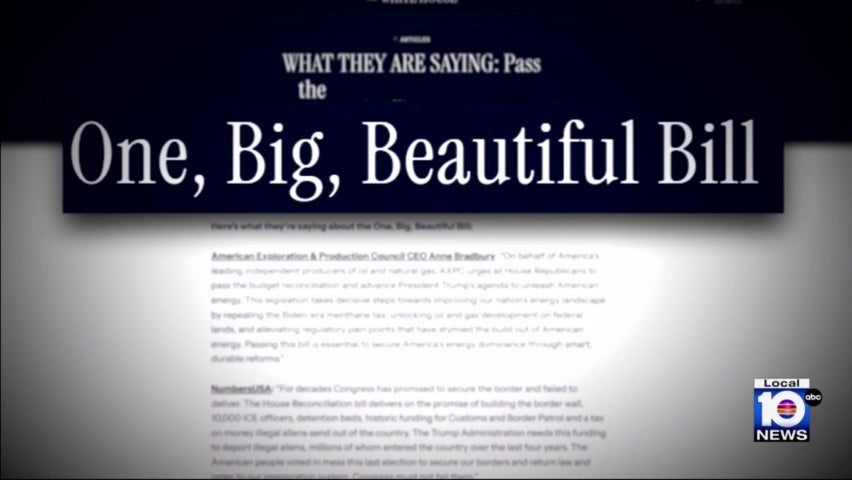
Sustainable Development Goals (SDGs) and the Changing Economic Views of Republicans

Introduction
A growing number of Republican politicians and theorists are challenging party orthodoxy on pocketbook issues, corporate power, and government’s role. This article explores the changing economic views within the Republican Party and their implications for addressing economic inequality and promoting social mobility in the United States.
Economic Inequality as a Concern
While discussions about economic inequality are often associated with liberals, a Pew Research survey reveals that about four in 10 Republican or Republican-leaning adults believe there is too much economic inequality in the country. Among Republicans making less than $40,000 a year, 63 percent agree that major changes are needed to address economic inequality.
Debate Among Conservative Thinkers
A growing debate among conservative thinkers, politicians, and the party base reveals a division on how to address pocketbook issues and the role of government. Some conservatives argue for a smaller government, while others believe more can be done to make a middle-class life possible for people.
Republican Presidential Candidates’ Economic Goals
Republican presidential primary candidates are jostling to validate populist energy and address financial unease. However, some of their economic goals may be challenging to reconcile with promises to reduce public debt and taxes. The article highlights Governor Ron DeSantis of Florida, who criticizes excessive regulation and taxes while expressing a desire for policies that support families and small businesses.
Realignments and Tensions
The article discusses the realignments within the Republican Party on economic issues and the tensions arising from differing views on inequality, globalization, and corporate power. Some conservatives prioritize federal spending and overall prosperity, while others focus on economic mobility and traditionalist goals.
Alternative Perspectives on Inequality
Alternative perspectives on inequality argue that it is not as high or rising as commonly believed. These perspectives suggest that welfare transfers and a decline in poverty rates indicate a more stable situation. However, critics disagree with these analyses and argue that economic traction for certain groups remains a concern.
The Role of Government in Rebuilding Capitalism
Oren Cass and his allies advocate for using government spending and power to promote economic mobility with traditionalist goals in mind. They aim to reduce the cost of living for married, two-parent households. This approach challenges the notion that the market is inherently coercive and capitalism is in tension with economic freedom.
Debates and Popular Reach
The article acknowledges debates about the ideological realignment on the right and its connection to Trumpism. Some argue that these debates are driven by loyalty to former President Donald Trump rather than a distinct ideology. However, there is recognition that these debates resonate with voters who feel underserved by existing political options.
Policy Proposals and Taxation
The article highlights policy proposals from Republican politicians that aim to address economic concerns, such as family policies and job creation. While some Republicans are wary of increasing taxes on the wealthy, there is support among Republican-leaning adults for raising tax rates for high earners.
The Current Focus and Future Outlook
Despite the economic debates, the article suggests that cultural issues and the “Make America 2019 Again” message will dominate Republican campaigns. Consensus on policy solutions remains elusive, and the culture wars take precedence over economic discussions.
SDGs, Targets, and Indicators
-
SDG 1: No Poverty
- Target 1.4: Ensure that all men and women, in particular the poor and the vulnerable, have equal rights to economic resources, as well as access to basic services, ownership, and control over land and other forms of property.
- Indicator 1.4.1: Proportion of the population living in households with access to basic services.
-
SDG 8: Decent Work and Economic Growth
- Target 8.5: By 2030, achieve full and productive employment and decent work for all women and men, including for young people and persons with disabilities, and equal pay for work of equal value.
- Indicator 8.5.1: Average hourly earnings of female and male employees, by occupation, age group, and persons with disabilities.
-
SDG 10: Reduced Inequalities
- Target 10.1: By 2030, progressively achieve and sustain income growth of the bottom 40 percent of the population at a rate higher than the national average.
- Indicator 10.1.1: Growth rates of household expenditure or income per capita among the bottom 40 percent of the population and the total population.
Analysis
-
SDGs addressed or connected to the issues highlighted in the article:
- SDG 1: No Poverty
- SDG 8: Decent Work and Economic Growth
- SDG 10: Reduced Inequalities
-
Specific targets under those SDGs based on the article’s content:
- Target 1.4: Ensure that all men and women, in particular the poor and the vulnerable, have equal rights to economic resources, as well as access to basic services, ownership, and control over land and other forms of property.
- Target 8.5: By 2030, achieve full and productive employment and decent work for all women and men, including for young people and persons with disabilities, and equal pay for work of equal value.
- Target 10.1: By 2030, progressively achieve and sustain income growth of the bottom 40 percent of the population at a rate higher than the national average.
-
Indicators mentioned or implied in the article:
- Indicator 1.4.1: Proportion of the population living in households with access to basic services.
- Indicator 8.5.1: Average hourly earnings of female and male employees, by occupation, age group, and persons with disabilities.
- Indicator 10.1.1: Growth rates of household expenditure or income per capita among the bottom 40 percent of the population and the total population.
Table: SDGs, Targets, and Indicators
| SDGs | Targets | Indicators |
|---|---|---|
| SDG 1: No Poverty | Target 1.4: Ensure that all men and women, in particular the poor and the vulnerable, have equal rights to economic resources, as well as access to basic services, ownership, and control over land and other forms of property. | Indicator 1.4.1: Proportion of the population living in households with access to basic services. |
| SDG 8: Decent Work and Economic Growth | Target 8.5: By 2030, achieve full and productive employment and decent work for all women and men, including for young people and persons with disabilities, and equal pay for work of equal value. | Indicator 8.5.1: Average hourly earnings of female and male employees, by occupation, age group, and persons with disabilities. |
| SDG 10: Reduced Inequalities | Target 10.1: By 2030, progressively achieve and sustain income growth of the bottom 40 percent of the population at a rate higher than the national average. | Indicator 10.1.1: Growth rates of household expenditure or income per capita among the bottom 40 percent of the population and the total population. |
Behold! This splendid article springs forth from the wellspring of knowledge, shaped by a wondrous proprietary AI technology that delved into a vast ocean of data, illuminating the path towards the Sustainable Development Goals. Remember that all rights are reserved by SDG Investors LLC, empowering us to champion progress together.
Source: nytimes.com

Join us, as fellow seekers of change, on a transformative journey at https://sdgtalks.ai/welcome, where you can become a member and actively contribute to shaping a brighter future.





